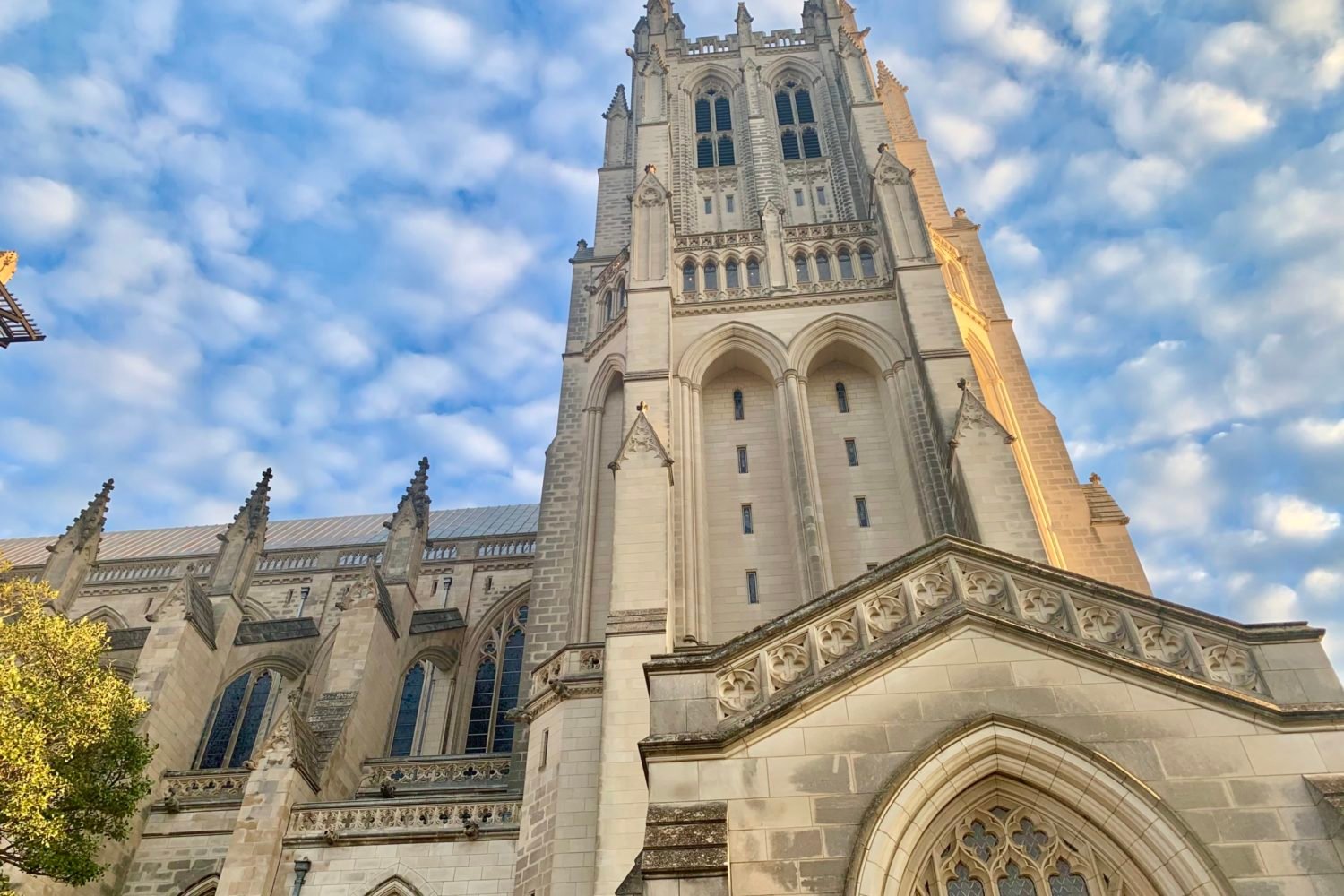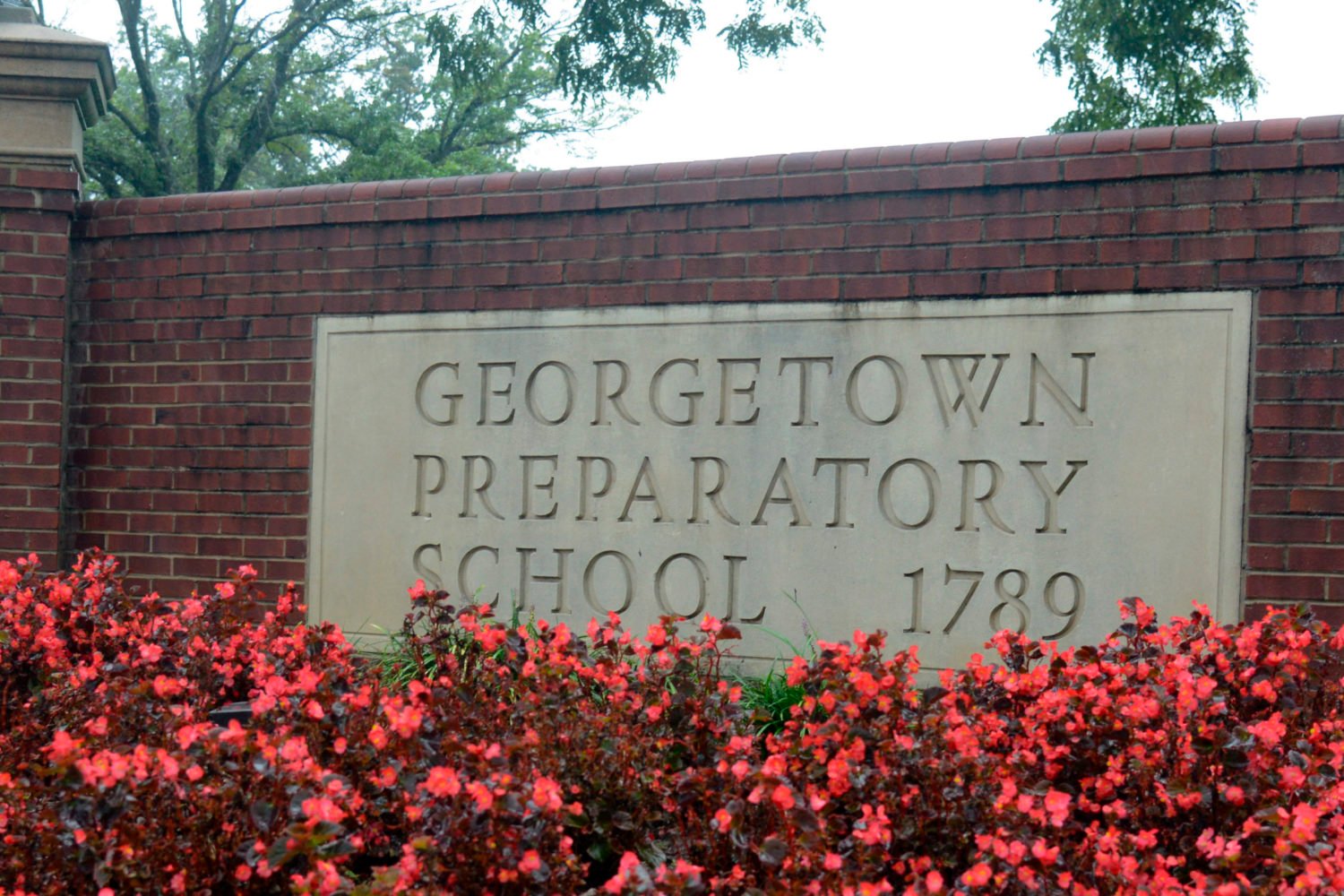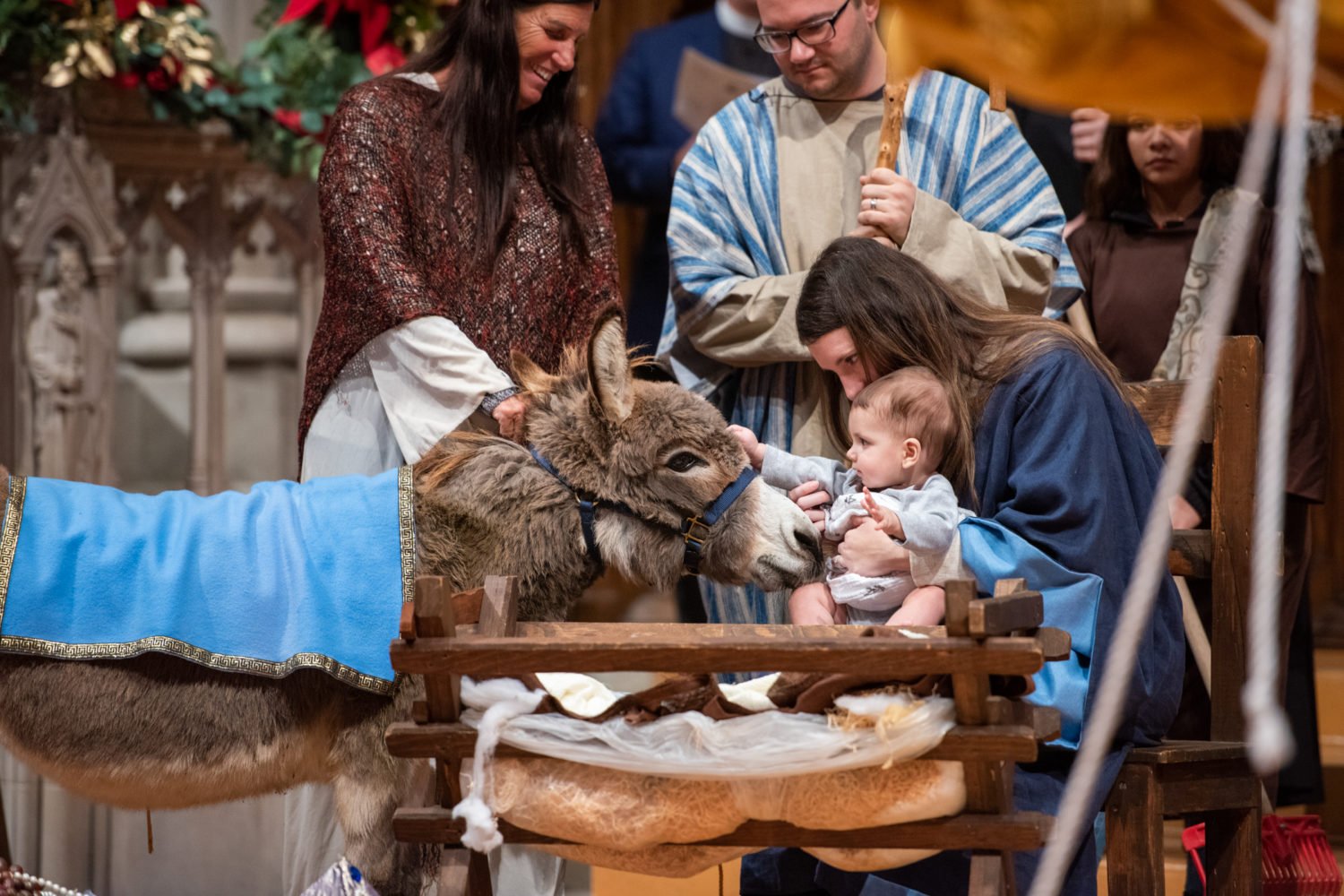Contents
- 1. Campuses have gotten swankier.
- 2. Getting in may be getting easier—but not at top schools.
- 3. Dress codes are getting more gender-neutral.
- 4. Big Data isn’t much help if you’re comparison-shopping.
- 5. In fact, Big Data doesn’t make much of a case for private school at all.
- 6. On the other hand, the gap between public and private in terms of “student experience” may be growing.
- 7. Private schools have always touted their smaller classes. Some are getting even smaller.
- 8. Private schools aren’t always better choices for children with learning issues.
- 9. When it comes to getting a leg up in college admissions, things have changed.
- 10. Competitive schools are trying to make students less anxious about competition.
- 11. Admissions officers are now looking at a child’s character.
- 12. Forget bragging about connections. You can impress admissions types via old-fashioned preparation.
- 13. Applicants don’t have to take the official tour—and it might even impress the gatekeepers when they don’t.
- 14. Parents are rethinking whether they want their kid to be a “lifer.”
- 15. For competitive schools, SSAT scores need to be higher these days. There are a few ways to nudge them up.
- 16. Schools are thinking more about marketing.
- 17. They’re more expensive than ever.
- 18. People who make six figures are getting financial aid.
- 19. Diversity requires more work than it used to.
- 20. Schools have become more willing to offer scholarships for a variety of talents.
- 21. There are brand-new models of how to pay.
- 22. Chains are entering the market.
- 23. The new tax law includes goodies for private-school parents.
- 24. Private-school teachers make less than public-school ones.
- 25. Schools are thinking beyond the yellow bus.
In July, when Brett Kavanaugh was nominated for a seat on the Supreme Court, sharp-eyed reporters noticed an astounding factoid: He was a graduate of the same private school as the last new justice, Neil Gorsuch. Back in the 1980s, both were educated at Georgetown Prep, the Jesuit boys’ school in North Bethesda.
Such are the moments when Washington private schools pop up on the national radar—as news stories involving presidential offspring or society scandals.
Locals, naturally, have a less breathless understanding: Some 17 percent of students in the area attend private schools, a number that has held steady since 2010. Yet just as the capital has changed dramatically since Gorsuch and Kavanaugh prowled Prep’s 93-acre campus, so has its private-school scene. In many ways, the changes are intertwined. Washington today is a region with more wealth, higher costs, greater diversity, less formality, better public schools, worse commutes, increased income inequality, and decreased social snobbery compared with 30 years ago. When a culture and an economy change so significantly, it stands to reason that the changes show up in the places where we educate kids—even places with century-old traditions.
Sometimes those changes shape things in contradictory fashion: For middle-class families with towering 21st-century mortgages, tuition seems newly daunting. But for schools fundraising in a much more dynamic region, there’s more money for financial aid.
Of course, public schools have been changed by the same evolutions in teaching styles, social rules, parental ambitions, and educational budgets. But their changes often get played out in daylight, where aggregate test scores and workplace challenges are a matter of public record. By definition, independent schools are independent of all that—and, in the eyes of parents who need to make choices, not to mention members of the public who are simply curious, much more opaque.
Here, we try to pull back the curtain a wee bit. In talking to experts and educators in the area, we assembled a list of new realities for anyone trying to navigate today’s private education. But we also wanted to know what life inside it is really like. How has the new Washington altered venerable institutions? For obvious reasons, we offered the insiders a chance to speak anonymously, and in the process found many who loved their jobs and believed in their missions—but had some stories to tell.
1. Campuses have gotten swankier.
Once upon a time, many private schools took a perverse pride in the austerity of their physical plants. No more.
DC’s Sidwell Friends now has green, LEED-certified buildings—and a courtyard “wetland”—in keeping with its progressive reputation. Georgetown Prep in North Bethesda, long a sports power, has a 150,000-square-foot athletic center with, among other facilities, an 11-lane pool and two wrestling rings. In the past few years, St. John’s College High School in Chevy Chase DC has opened a visual-and-performing-arts center with acoustically de-signed music classrooms, plus an Entrepreneurial Center for Innovation and Leadership, fueled partly by a $16-million grant from Under Armour founder and 1990 St. John’s alum Kevin Plank.
Says a former admissions director: “There’s definitely an arms race. Georgetown Prep sort of started that when they built their facility. Bullis then put several million dollars into their facilities. St. John’s did the same thing. All the schools are doing it now. The reason they do it is to attract students.”
Back to Top2. Getting in may be getting easier—but not at top schools.
According to census data, the number of kids in private schools nationwide shrank by 14 percent between 2006 and 2016. The Western Interstate Commission for Higher Education has projected a further decline of up to 12 percent by 2025. Around Washington, where about 17 percent of children are in private schools, trends are more mixed. Because public schools have gotten better and the rise of charter schools has given parents more options, many private schools face new competition.
According to the Association of Independent Schools of Greater Washington, 42 percent of its 77 member schools reported an increase in enrollment last year, while 48 percent reported a decrease. (The organization represents self-governing schools—it uses the term “independent”—and not schools overseen by churches, for-profits, or nonprofits.)
But this new environment doesn’t necessarily change the odds at marquee schools such as St. Albans, National Cathedral, Sidwell Friends, Georgetown Day, Maret, Holton-Arms, Potomac, Flint Hill, and Landon. According to Ross Blankenship, a private-school admissions consultant, top institutions still have much lower acceptance rates—and applicant pools have gotten more competitive.
Back to Top3. Dress codes are getting more gender-neutral.
“Instead of saying ‘girls will wear’ or ‘boys will wear,’ it says ‘students at this institution will wear,’ ” according to one local teacher. “All students are allowed to wear slacks—there’s not going to be language that has girls having to wear dresses or skirts. It’ll talk about ‘shirts’ rather than ‘girls will wear blouses’ and ‘boys will wear button-downs or polos.’ ”
Back to Top4. Big Data isn’t much help if you’re comparison-shopping.
Over the past few decades, America’s schools have fallen in love with Big Data, giving pols a way to evaluate school districts—and offering ambitious parents a real-estate road map. Independent schools, though, either don’t have some of that data (they’re not giving some of the standardized tests administered by public schools) or don’t willingly share other data (say, acceptance rates), and they can be selective about which stats they do promote. Which means 21st-century parents are left to choose among schools the old-fashioned way.
[su_box title=”
Tales Out of School: The Teacher
How students changed
” style=”soft” box_color=”#00a0dd” title_color=”#000000″ radius=”3″]

“Compared with five or ten years ago, kids are still crazy motivated, very bright, really engaged in school, but they seem to find everything more heightened and stressful. There are more kids with diagnosed anxiety, more who call in sick because of mental health, more who are just overwhelmed. “You see therapy dogs during exam week. Anxiety attacks in the middle of a school day. We have kids who’ll go out of state to do a semester or a summer at a special therapeutic school that focuses on anxiety. It’s all populations and all socioeconomic backgrounds. “What that means is teachers are doing more with health-and-wellness practices. We still hold kids to sports because it’s good for physical and mental health, but now we’ll also do a mindfulness practice at the beginning of a certain class, some teachers will use journaling, or there’ll be a meditation during an assembly. We have a psychologist on staff, and it wouldn’t surprise me if we added more counseling staff in the next five years. “Another big change I’ve seen is in diversity and inclusion programming at the student level. Our kids are much more adept at having hard conversations around race, gender, sexuality. They’re pushing the adults—they hold us accountable, especially around gender and gender-pronoun use. I also see them talking a lot more about political diversity and making room for minority views in a place—a Washington private school—where they see the majority of kids coming from liberal families. “But most of our kids try very hard to hide class. They’re not willing to talk about where they come from socioeconomically. “There’s a lot more being asked of students and teachers beyond academics. Schools are saying, ‘We don’t just teach your kids to be good students—we teach them to be good people.’ So there’s a ton of pressure to teach kids to have a high cultural intelligence, to be leaders in the community, to understand ethical behavior, stress management. There’s a lot being asked of the school, and I think teachers feel they need to know more than they ever did.” —Teacher at a private high school[/su_box]
Back to Top5. In fact, Big Data doesn’t make much of a case for private school at all.
What’s more, as for the basic question of public versus private, a recent University of Virginia study found that once you adjust for sociodemographic traits, there’s no advantage when it comes to the kinds of things statistics can measure.
“You don’t see any benefit of kids going to private school that’s above and beyond growing up in the demographic group they grow up in,” says Robert Pianta, dean of the Curry School of Education and one of the study’s authors. Pianta points out that the study also didn’t find any difference among public versus private in motivation, expectations for the future, or engagement in risky behavior.
“People don’t like hearing that,” he says. “People will read this and say, ‘My kid in my private school really needs this education to be successful.’ Our research shows, on average, that is not the case.”
Back to Top6. On the other hand, the gap between public and private in terms of “student experience” may be growing.
The flip side of all that data: Public-school students in places like DC spend more time on standardized testing—and in classes apt to teach to the test. Independent schools that don’t answer to education bureaucracies can offer more customized learning. They’ve also grown more willing to break with pedagogical tradition to do so.
Top schools prize flexibility so much that recently several of them—Georgetown Day, Landon, National Cathedral, Potomac, Sidwell Friends, and St. Albans—announced a phaseout of Advanced Placement courses.
Other experiential upsides: Because private schools tend to be smaller, there’s less competition to land a spot on the soccer team or in the play—the kind of growth experiences people cherish. And less competition for a teacher’s time—including for parents.

7. Private schools have always touted their smaller classes. Some are getting even smaller.
Nationwide, the average student-to-teacher ratio is 12 to 1 at private schools versus 16 to 1 at public schools. Some local private schools have ratios as small as 6 to 1.
Now come even tinier models. Maybe it’s no surprise that in an age when we’re nostalgic for handmade pickles and sweaters, the idea of the one-room schoolhouse, or “micro-school,” has appeal.
Take the Mysa Microschool, which has an elementary in Georgetown with just 16 kids (and a student-to-teacher ratio of 4 to 1) and a middle and high school in Bethesda with 22 (and a 5-to-1 ratio). As in a one-room schoolhouse, children work in mixed-age clusters—a second-grader might be doing third-grade math if that suits the child.
“People seem to be wanting these small community schools,” says Siri Fiske, Mysa’s founder and head. “All the parents know each other, all the kids know each other.”
Capitol Hill’s Blyth-Templeton Academy is another micro-school that uses Washington as a giant classroom for its 46 students, with visits to museums, neighborhoods, and nonprofits. With the elimination of bells and whistles—no athletic fields, buses, or cafeterias—a micro-school’s tuition can be lower. Mysa charges $20,000, Blyth-Templeton $15,550.
Back to Top8. Private schools aren’t always better choices for children with learning issues.
The old stereotype of private schools is that they’re hyper-competitive environments where there’s no room for kids with learning challenges. In some respects, that’s no longer true. “Almost all private schools now have a learning center with learning specialists—ten, 15 years ago, there wasn’t a dedicated department with trained specialists there to support not only kids and families but also to work with faculty in their professional development,” says a teacher at an elite private school in the District. Private schools also offer more one-on-one teaching and tutoring, which can help children with learning challenges thrive.
Yet not all learning difficulties are created equal. Private schools can be great for children with mild to moderate learning issues—a child may get some accommodations, such as extra test time, but will still be expected to do the rigorous course- and homework. But for kids who really can’t keep up with the school’s pace, says educational consultant Clare Anderson, “public school can be a great option” because it’s more likely to have classes at various levels of difficulty.
There also are places—such as the Lab School in DC, Commonwealth Academy in Alexandria, and the Siena School in Silver Spring—that specialize in teaching those with diagnosed learning difficulties.
9. When it comes to getting a leg up in college admissions, things have changed.
While only about 10 percent of children in this country go to private school, they make up a disproportionate share of the student bodies at top colleges: some 35 percent at Harvard, 38 percent at Princeton.
There are many reasons, from demographics to academics to less competition at private schools for that résumé-enhancing spot on the football team. On the other hand, an A average from a more rigorous school is harder to pull off. For years, colleges took that into account when evaluating applicants, but the practice may be fading.
“College admissions officers aren’t differentiating as much between public and private schools—private schools aren’t getting the weighted-GPA advantage they were before,” says a former private-school admissions officer. “Now a 4.0 from Sidwell is viewed by many college admissions officers as the same as a 4.0 from [Bethesda public school] Walt Whitman, for example. This is especially true in the Washington region, where there are a lot of strong public high schools.”
One edge for private schools: According to the National Association for College Admission Counseling, they’re more likely to employ college counselors. With smaller graduating classes, those professionals can spend more time helping all students find a college that’s a good fit and steer them through the application process.
[su_box title=”
Tales Out of School: The Coach
No one wants to play JV anymore
” style=”soft” box_color=”#ffffff” title_color=”#000000″ radius=”3″]
“I’ve been coaching in Washington more than 20 years. About ten years ago, things started to change, and it’s not good. Everyone feels entitled to bat leadoff and play shortstop, way more so than it used to be. Players feel like they should be treated exactly the same as everyone else, even if they don’t work the hardest or they’re not as committed. No one wants to work for anything. Kids don’t want to play JV sports anymore; people don’t want to be the reason their team is good—they want to be part of something that’s already good. And if there’s a younger kid playing over them, they just quit. “It has to do with the rise of private sports leagues that are just trying to cash in. They make sure everyone is treated the exact same way and the customer is always right—100 percent satisfaction. That is the opposite of the way it used to be, where you had to earn your keep. This whole everyone-is-a-winner mentality has really hurt our kids. “The apple doesn’t fall far from the tree. You get [parent] e-mails nonstop or texts. The number-one thing we hear is: What can my son do to get more playing time? A staff member got an e-mail about this the other day. A parent said to my assistant coach, ‘I really like the way you work with the kids. Why is my son batting tenth?’ Look, there were ten players in the lineup, and we were trying to get everyone into the game. If we were only batting nine players, he probably wouldn’t have been playing. “I feel like parents are so used to success in other areas, especially in their professions, that they feel if they spend enough money on athletics, success for their child will follow. Part of it is on us, too. You can build team culture the way you want to build it. I think sometimes nowadays a lot of coaches are shying away from that and folding to the pressure. “There’s a reason I do what I do, and I love it. I refuse to let anyone take that away from me. What’s been helpful is I try to be as honest as I can. I tell parents my door is always open, my inbox is always available, but be ready for me to tell you the truth.” —A varsity head coach at an elite private school[/su_box]
Back to Top10. Competitive schools are trying to make students less anxious about competition.
When children arrive many mornings at the Langley School, a pre-K–8 in McLean, they’re asked to chart their state of mind on a mood meter. If a child is anxious or upset, he or she can take a break in spaces like the classroom’s “peace nook” and practice mindfulness techniques such as cleansing breaths until the child feels like rejoining the group.
At the Nysmith School for the Gifted, a pre-K–8 in Herndon, students learn concepts such as how to be heard and how to figure out what makes them happy.
Episcopal High School, a boarding school in Alexandria, offers relaxation centers during exam weeks—kids can get foot massages, hug stuffed animals, or talk to an adult.
Says Susanna A. Jones, head of school for Holton-Arms, a private girls’ school in Bethesda: “We spent years focusing on the mind. Not that we don’t still focus on the mind, but we focus more on soul and spirit than we used to.”
Back to Top11. Admissions officers are now looking at a child’s character.
For about two decades, there’s been a movement among private schools to try to identify an applicant’s character—things like whether the child plays well with others. Now they have a test for that.
“Character has always been an important part of independent schools and admissions, but it might have changed a bit in the way we’re looking at it in the last three or four years—it gets more weight,” says Holton-Arms’ Susanna A. Jones. “If we get a sense somebody might be really bright but she doesn’t get along at all with other people, we might be less inclined to take her than someone who isn’t as strong academically but doesn’t seem to have those qualities. That hasn’t changed, but what’s changed is you can measure it.”
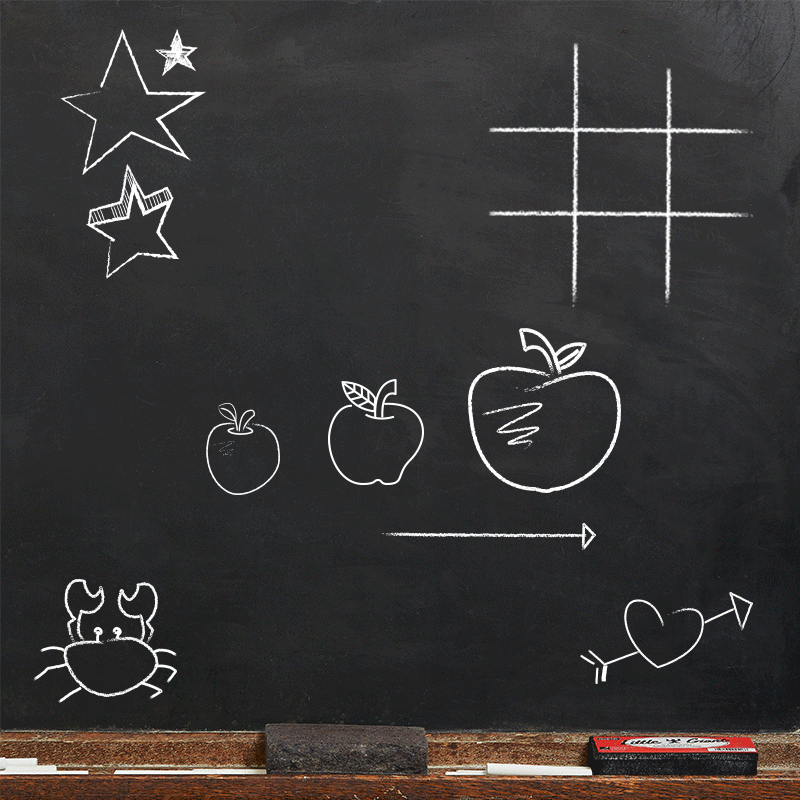
12. Forget bragging about connections. You can impress admissions types via old-fashioned preparation.
While most parents just want a school that’s a good fit for their child, some are so determined to get into a top-tier institution that they call everyone they know who’s connected to the school to put in a good word.
A good impression can be made much more easily, says school consultant Ross Blankenship, who founded Studyhall.com. His advice for parents: “Do some research on the school before you apply. During the interview, ask questions. And when you meet the admissions staff member, make eye contact and have a good handshake. That stuff really matters.”
Back to Top13. Applicants don’t have to take the official tour—and it might even impress the gatekeepers when they don’t.
“I can’t say it enough: I would never, if I’m looking at a school, go only on the official tour,” says consultant Ross Blankenship. “If it’s your dream school, go off the path. Without your parents, go talk to students in the cafeteria when you don’t have the tour guide watching you. Ask if you can sit in on a class they didn’t tell you that you could sit in on. You have to throw the brochure aside and discover whether that school is what they’ve told you it is. Are kids happy when they walk around? Look at their posture. I’ve never encountered a school that said you couldn’t do that. Wouldn’t it be a red flag if they said you couldn’t?”
The bonus, he says: An admissions office will likely be impressed by a child who shows initiative and curiosity.
Back to Top14. Parents are rethinking whether they want their kid to be a “lifer.”
One upside to putting your child in a K–12 school: Apply once and you’re done. New thinking suggests that’s not always a great idea. Mary Killay Lavayen, a consultant with Independent School Options in Alexandria, suggests parents think of the process in three-to-four-year increments: “You don’t just plop them in the school and say that’s it. You’ll want to check in to see if it’s the right fit after a couple of years. You’ll know more about that child in the sixth grade than in kindergarten. It’s not uncommon to place a child in one school for kindergarten and then another in sixth grade and again in high school.”
“You may think, ‘Well, if this doesn’t work, we’ll switch schools,’ but your kid has a say in that,” says a Chevy Chase mom whose daughter, in a K–12, was diagnosed with ADHD by middle school. “I didn’t feel the middle school and high school were right for her. But by middle school, my daughter was attached to her friends. She refused to go to another school.”
Back to Top15. For competitive schools, SSAT scores need to be higher these days. There are a few ways to nudge them up.
The Secondary School Admission Test is used by many private schools, starting as early as third grade, to predict what a child’s SAT score will be years later in 11th grade. “The 90th percentile has become the cutoff score for guaranteed admissions into a top private high school,” says Ross Blankenship, author of Admit You!: Top Secrets to Increase Your SSAT and ISEE Exam Scores and Get Accepted to the Best Boarding Schools and Private Schools.
He suggests a few tips for improving this standardized-test score: “Take practice exams under the same conditions as the actual test. If the test is going to be administered on a Saturday at 8 am, you should take your practice tests at 8 am on Saturday mornings. And if you’re going to sit for the SSAT at Georgetown Prep, see if you can check out the room in which the test is going to be administered. It’s allowed.
“It’s about building confidence,” he says. “I cannot tell you how scared these kids are. And many parents are super over-aggressive. Most of them, actually. They’re telling their child, ‘Hey, you’ve got to go to this school or else your life’s over.’ There’s more pressure in DC. It’s ten times greater than what I see from parents in California.”
[su_box title=”
Tales Out Of School: The Teacher
Have parents changed?
” style=”soft” box_color=”#f04846″ title_color=”#000000″ radius=”3″]
“Here’s the biggest difference that’s taken place in the 11 years I’ve taught: It used to be I felt I had the support of parents. Now we get blame: ‘My child does not act up in the classroom—you’re not on top of it.’ It used to be when a child went home for being in trouble, they were in trouble at home, too. Now the next day there’s a lawsuit. You see it a lot: ‘My child did nothing wrong—it’s the teacher’s fault.’
“One child said the F-word on the playground, and we don’t allow that. The parents were adamant he didn’t say that—that I misheard, even though he admitted it. For these parents, if their child misses a math problem, they’re in the next day wanting to know what I did wrong and how their child misunderstood.
“The other change is competition: ‘My child is better than your child.’ They have to be the star of the play. They have to be award recipients. They have to be on every team. One mother was a lovely person, but her child didn’t get the lead in the play, and she threatened to take her daughter out of school. It was crazy.
“The year before, we had a new family come in. They had sold their IT company in Silicon Valley for millions and moved here. I had their daughter in second grade. The first day, these new parents dropped off their daughter. She had a great first day. She made friends, she sat with her new friends. School got out at 3. By 3:30, the mother was in the headmaster’s office and said her daughter was not being challenged and she wanted a meeting. Her daughter had been in the school eight hours. Eight hours.
“Holiday gifts have gotten a lot better. Eleven years ago, I’d get six mugs—some would have coffee, some chocolate. Sometimes a 7-Eleven gift card. This year, I ended up with gift cards worth $450. I have 22 kids. The kindergarten teacher got a Coach purse. Again, that’s competition. The parents like to brag about what they bought.”
—Teacher at a private K-8 school[/su_box]
Back to Top16. Schools are thinking more about marketing.
For years, schools have been tagged with reputations, whether they wanted them or not—the lacrosse jocks (Landon), the earnest liberals (Georgetown Day). The difference now is that schools aren’t shying away from branding themselves.
Burgundy Farm Country Day School, a K–8 with a campus in Alexandria plus a 506-acre wildlife sanctuary in West Virginia, specializes in environmental science—teaching kids about birds and trees and climate change. It’s been around since 1946, but only in recent years has it promoted its distinctiveness. “With a more competitive marketplace, there’s been an awakening among many schools of more attention to differentiation of niche,” says Seileen Mullen, vice president of the board.
Whether they have a niche or not, all schools now have to sell themselves in new ways. “Ten years ago, parents would visit and take a tour. It was all a feel: ‘I love the campus,’ ” says Elinor Scully, head of school at the Langley School in McLean. “That’s not how it works now. We have to use all these channels to get our message out. We do webinars to get our word out. These are savvy customers. They want to know where our graduates go, how they test, what kinds of activities they engage in.”
Back to Top17. They’re more expensive than ever.
According to an analysis by the National Association of Independent Schools, almost all schools have doubled tuition since 1998, from an average of $11,837 to $23,372. That’s a national figure—some elite academies in Washington charge double that. National Cathedral, for example, costs $43,585 annually.
The reason, say educators we spoke with: Schools have had to add all sorts of faculty, such as learning specialists, Chinese-language instructors, and teachers for STEM—science, technology, engineering, and math.
“It’s the biggest challenge for independent schools today,” says Jennifer Danish, head of Grace Episcopal Day School in Kensington. “It’s a conversation that all schools are having: How do we control costs? One of the hallmarks of private education is strong teaching, and you want to pay those teachers well.”
Back to Top18. People who make six figures are getting financial aid.
Financial assistance is more like a spectrum than a binary, and the spectrum extends much higher up the income scale than it once did. “More and more, we’re seeing families with incomes of $200,000 and up qualify,” says Frankie Brown, financial-aid director at Sidwell Friends, where tuition is about $42,000 this year. She says one-quarter of all families there receive financial aid. “There are no salary caps. There could be a family that makes $400,000 a year but someone has lost their job or something has shifted. The key is not to be afraid to ask.”
At Maret, a K–12 school also in DC, the numbers are similar: 28 percent of families getting aid have gross household incomes over $200,000. This is hardly surprising, given that a family with a $200,000 household income in Washington isn’t exactly flush if it has one or more children in private school. “The one group we’re losing in independent schools is the middle class, people on the cusp that almost qualify,” says Katy Harvey, director of admissions and financial aid at National Presbyterian School, a private elementary in DC with tuition ranging up to $31,840.
Back to Top19. Diversity requires more work than it used to.
In an often unequal, socially segregated society, diversity has always been a challenge for schools. But it has become more complicated as society has evolved. Not long ago, it largely meant thinking about white kids and black kids. Today, in a region that has seen its demographics transformed by immigration, schools trying to assemble a student body that looks like the region need to think about the area’s large Asian, African, and Latino populations—all of which are internally very diverse themselves, and continually evolving.
Says Carson Roy, director of admissions and financial aid at the Potomac School in McLean: “We’re much more proactive in our outreach. One of the things we focus on is continuing to strengthen relationships with the Black Student Fund, the Latino Student Fund, A Better Chance, and the Emerging Scholars Program. These organizations help talented students of color gain access to private schools. We are going to school fairs, we are presenting at workshops. We’re working with placement staffs at these organizations. We’ve had leaders of these organizations come to campus and give tours.”
[su_box title=”
Tales Out of School: The Administrator
How money talks now
” style=”soft” box_color=”#00a0dd” title_color=”#000000″ radius=”3″]
“The vast majority of alumni—those who do not have a child at the school and who do not have a child in the pipeline—give with a long view. They want to support the school. On the other hand, the vast majority of parents who make gifts to the school do so to advance the interest of their child. These parents, in general, have a short view: How can I get Thurston—or Chad or Chaz or whoever—into Harvard, Yale, or Princeton?
“If you’re a wealthy family, you might give $25,000 to a private high school for social status or for the tax write-off. But some private schools, like the one I worked at, allow donors to earmark donations for particular programs. If a parent is given the ability to direct that money to a program their son or daughter participates in, they’re going to do that. The parents think, ‘If I can give $10,000 and it all goes to a certain sports team and the coach knows it, then Thurston might play more.’ And guess what? Thurston did play more. When I was working at the school, people were earmarking gifts for the programs their kids were involved in as de facto bribes, to get the kid special treatment. It creates a moral hazard.
“Some parents give gifts directly to teachers. They invite them out to eat or give them cash, invite them on vacations. They might let a teacher use their beach house. Not all schools have policies against those kinds of gifts. Sometimes the influence is less direct. Teachers often have pet programs, or they might take students on a summer trip, and sometimes parents say, ‘Let me donate to support your summer trip.’ I remember on one occasion, a teacher told me that a parent, whose children he had been tutoring, paid him more than his usual fee. Then the parent told the teacher, ‘You know, my child gets A’s in every class, but he can’t seem to get an A in your class. I just want to really thank you for your extra help this summer.’ He was trying to bribe him.”
—Former development officer at an elite private high school[/su_box]
Back to Top20. Schools have become more willing to offer scholarships for a variety of talents.
“It used to be only for athletics, but now academics are playing almost as big a role,” says a former admissions director. “There’s also more scholarships available for music, theater, all those things.”
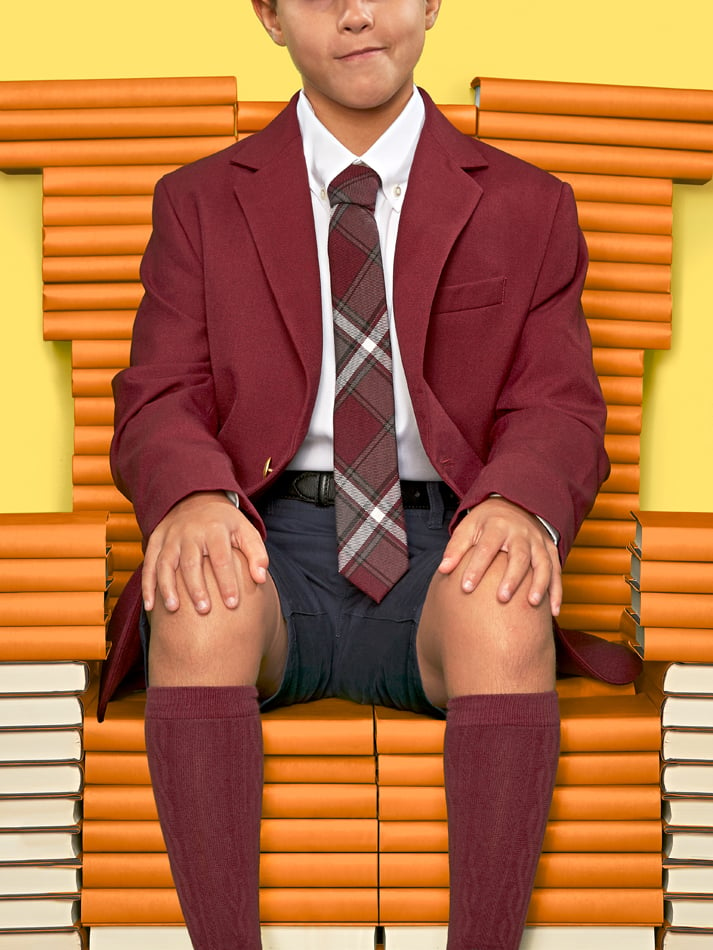
21. There are brand-new models of how to pay.
While private schools have for years awarded scholarships, some are coming up with more unusual approaches to paying the tab.
Grace Episcopal Day School in Kensington has a variable-tuition program—instead of giving financial aid to families who can’t pay full price ($19,900 to $25,900), it tiers tuition, with a family paying what the school determines it can afford. “It gets rid of the stigma they might have about receiving a grant,” says head of school Jennifer Danish. The program has been in place one year, and enrollment increased this fall from 94 to 106 students.
At Don Bosco Cristo Rey High School in Takoma Park, which serves lower-income students, kids go to class four days a week and participate in a corporate work/study program on the fifth, earning money to pay the bulk of their tuition.
Back to Top22. Chains are entering the market.
Don Bosco—part of the Chicago nonprofit Cristo Rey Network, with 35 schools in 22 states—isn’t the only out-of-town chain setting up in the area. Another entrant in the market: Basis, which has about two dozen charter schools and five independent schools around the country, including a pre-K–12 in McLean.
“As in other industries, we are seeing in the educational landscape increasing examples of what might be called disruption,” says Peter F. Bailey, executive director of the Association of Independent Maryland and DC Schools. “Opportunities for creativity and innovation are emerging.”
The name making the biggest waves is Chris Whittle, an entrepreneur who for years has started nontraditional educational ventures. Next fall, he’s opening the for-profit Whittle School & Studios in DC’s Van Ness neighborhood. The first five grades will be Chinese-English immersion, with the option to switch to or add Spanish in third grade. Older children will get a chance to study abroad at planned campuses in such places as London, Mumbai, and China.
[su_box title=”
Tales Out of School: The Scholarship Student
We pretend class doesn’t matter. It does.
” style=”soft” box_color=”#ffffff” title_color=”#000000″ radius=”3″]
“If you compare Potomac, where Bullis is located, with where my home is located, they’re polar opposites. Ward 8 is the poorest ward of DC. My street happens to be one of the quieter ones, near Bolling Air Force Base, off South Capitol, but just to the left and just to the right are streets where people sell drugs, and there’s a good bit of violent crime. The kind of place where if you looked at someone the wrong way, you could get killed.
“I lived so far away that a school bus wasn’t an option, so I took public transit. I woke up at 4:50 to make it to school on time. I’d throw on my uniform and get out the door, no time for breakfast. I’d walk two or three blocks to the bus stop, wait 15 or 20 minutes for the A4, and ride that for 30 minutes to the Anacostia Metro station. Then I’d go through my backpack looking for every bit of change I had to get onto the train. Sometimes the station manager would just let me in—they saw I was going to school every day. I’d take the Green Line to Gallery Place, then the Red Line to Friendship Heights. I’d wait 20 minutes or so for the T2 bus, then it was a 30-to-40-minute ride to Bullis. I’m there by 7:30. Then do the same thing all over again at the end of the day.
“Eighty-five percent of the students would have no inkling of what I was going home to—the hole in the ceiling above my head where I could see parts of the sky, being subject to threats on the bus because I looked different, wearing my uniform and reading a book. I was one of maybe 20 black kids in my grade. I’d say half of them were from affluent families; the rest were on scholarship for sports. I was one of a small number who were not recruited by the football or basketball coach.
“Everyone was in Ralph Lauren and Lacoste polo shirts, and I was in stuff I found at Salvation Army, stuff that barely fit. I remember people commenting on that in the locker room when I was changing, like, ‘Ha ha, what are you wearing?’ Everyone had a North Face backpack and wore Sperrys; they all had the latest iPhone. The cars—these kids are driving Range Rovers, a few have a Lexus, a Benz. There’d be girls literally gifting athletes Gucci flip-flops and Jordans. Who does that? After summer break, they’d all talk about their trips. The question would be ‘Where’d you go on vacation?’ It was Prague, Rome, Oslo, Mongolia, Japan. How was I going to answer that question? I’d keep it vague.
“No one knew that my dad worked three jobs. One of my closer friends, I didn’t have to say anything, he just knew—he could see how relieved I was when he’d say I could come to his house. Every time I’d go, I’d help him with his homework. Then it gets to the point where I am close enough to his family that I can stay over whenever I want, but at the same time I don’t want to be a burden. And there were experiences that made me feel unwelcome. They’d ask me to impersonate a thug—that was not once, not twice, but over and over. There were times when I was able to wiggle my way out of it and times when I wasn’t. It’s like, I don’t want to do this, but I’m happy to be here because it’s a lot easier than being at home and I don’t want to not be welcomed back, so let me just do this thing that they find so funny, and it’ll be over in two minutes. But then you do it and you see the way they laugh hysterically. They’re like, ‘Pull your pants down a little now—we should have him put a chain on.’
“One time, we’re sitting in the car on the way to their Chesapeake Bay house, and my friend is like, ‘Zach, look up some funny black names, some funny ghetto names.’ This is my best friend. His mom is like, ‘Ha ha, whatcha got for us, Zach?’ I’m trying to convey that I’m not the most enthusiastic about this and maybe she’ll not encourage this. But she’s into it. He pulls up some website and starts reading the names. I’m thinking: That’s my cousin’s name, that was an old friend’s name. You realize you’re this guy’s only black friend, and it’s extremely uncomfortable. I didn’t want to stay over at his house for a while, and I didn’t go back for three or four weeks. But he’s like, ‘Hey, Woodie, when you coming back?’ And I get over it. It really does behoove me to go over there because there’s great access to internet, a full meal, there’s AC, good lighting, a comfortable bed, the shower’s not rotting—all these conveniences I don’t have.
“I survived because I was good at conversations, and I helped people. I’d get invited to parties, but I couldn’t go. There was no bus that was going to take me home after some party ended. But it didn’t affect my social standing, because I knew how to be a social guy in the classrooms and the hallways. By the end of my freshman year, I was near the top of my class. Some of the lacrosse guys were worried about history tests, so I’d make a study guide, pulling the most important stuff out of the textbooks and making bullet points of what you needed to know—they loved it. I probably made ten different study guides during my time there.
“I wanted my teachers to like me, to know that I was a highly motivated student, that I didn’t want to get all A’s if I could get all A-pluses. It was not until midway through my junior year that I shared with a few teachers some difficult things going on outside of school. Basically, you’ve got college coming up, things are increasingly stressful, things are going up and down with my mom. It wears on you over time, and I wanted to take on more and more—track, Model UN, tutoring. I was spread so thin. It got to the point where I could not manage it all on my own. I remember one teacher saying I could crash at his apartment. Another said, ‘My husband and I would love to have you at our home. If you’re not eating, I can cook for you.’ That kind of thing.
“It was worth it in the sense that it made me a tougher person. But there were ways in which it wasn’t worth it at all. If a young person from Ward 8 was thinking about attending private school here, I’d say: You’re going to be painfully aware of your race, regardless of your friend group, where you feel like you’re just different in ways that can feel isolating, and it’s going to be hard sometimes, but the opportunity and the access, the way in which they allow you to be creative, to find out what you’re good at, it’s worth it. The benefits outweigh the costs. I’d just say: Try to be open to making the most of the aspects of that experience that really mean something to you. And remember that you are there because you deserve to be there.”
—Zachary R. Wood, author of the memoir “Uncensored,” part of which is about his years at Bullis School, from 2010 to 2013[/su_box]
Back to Top23. The new tax law includes goodies for private-school parents.
As of January 1, families are now able to use 529 savings plans—formerly restricted to college and post-secondary education costs—for elementary-, middle-, and high-school tuition. DC, Maryland, and Virginia all offer their own 529 plans that allow for tax-free earnings growth and tax-free withdrawals of up to $10,000 per year per child to pay for school.
Back to Top24. Private-school teachers make less than public-school ones.
According to the Digest of Education Statistics, the average base pay for a full-time US public teacher in the 2011–12 school year was $53,070, while for private teachers it was $40,200.
In a public-school system, pay is determined by a teacher’s experience and degrees. In a private school? “It’s whatever you can negotiate with the headmaster,” says one teacher.
Higher salaries aren’t the only perk of teaching in a public system, says this teacher, who has taught both public and private: “The public system offers more for teachers in terms of teacher development and opportunity because it’s bigger. And the benefits are not good at a private school, again because it’s small. You don’t have a great health plan.”
Back to Top25. Schools are thinking beyond the yellow bus.
Many parents make sacrifices to get their child a private education. One of those sacrifices: dealing with traffic daily, a hazard when you opt for an out-of-the-neighborhood school.
“Schools are trying to think of incentives to create carpooling,” says Amy McNamer of the Association of Independent Schools of Greater Washington. “Many of our schools send out Zip-code lists over the summer so families can be in touch with each other. At some schools, as children get older and can drive, if the senior drives in a carpool that’s full, they get free parking for a year.”
Schools are offering shuttle services from the Metro. They’re adding bus routes if feasible.
“We’ve seen Uber here a few times—maybe 15 rides last year,” says Ken Nysmith, head of the Nysmith School for the Gifted in Herndon. “Three years ago, I had not seen that.”
This article appears in the October 2018 issue of Washingtonian.
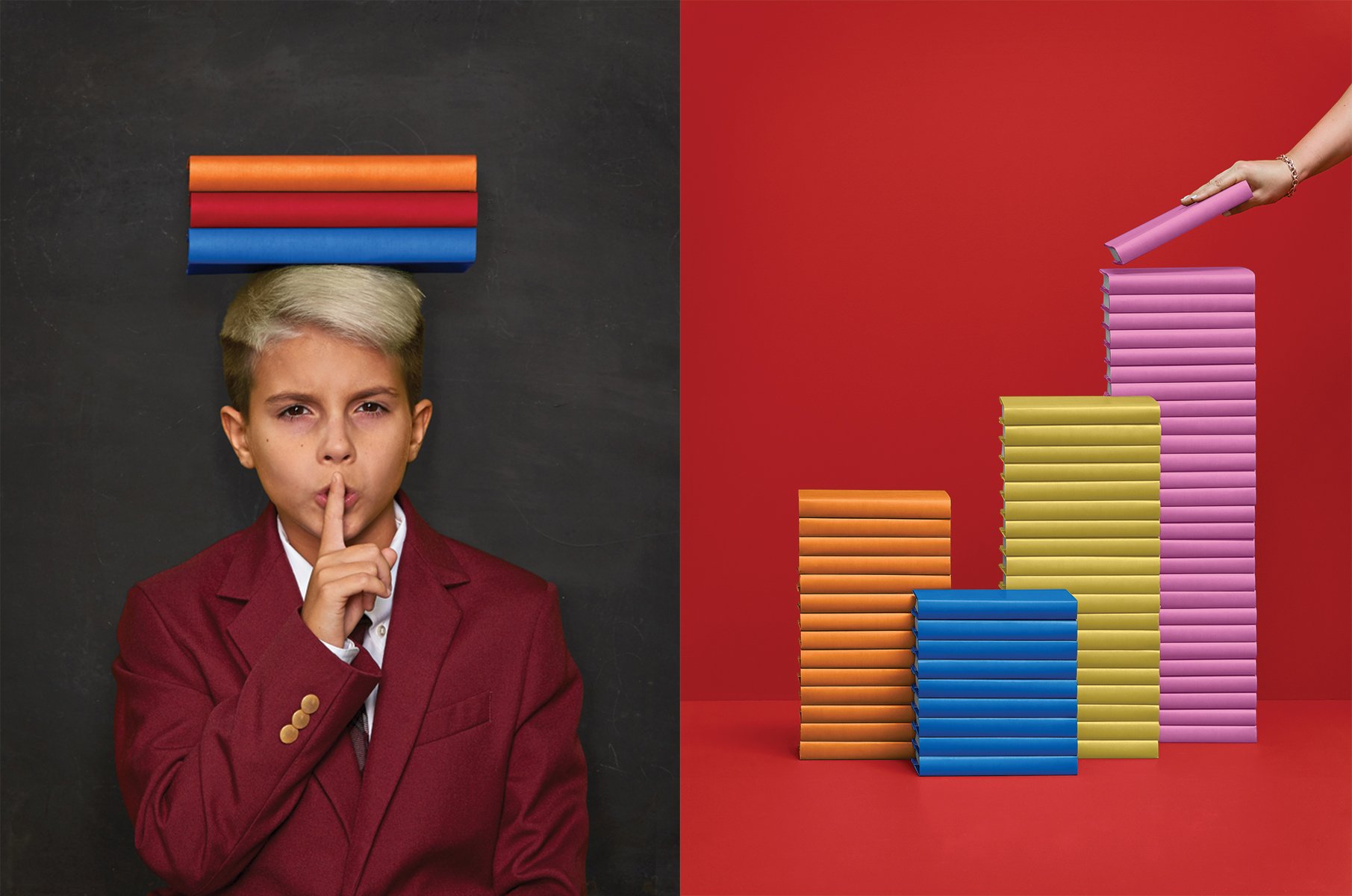
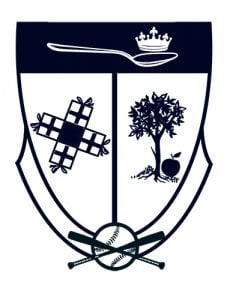


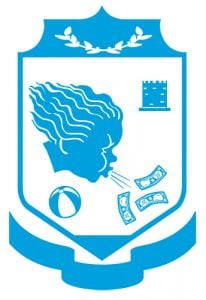


![Luke 008[2]-1 - Washingtonian](https://www.washingtonian.com/wp-content/uploads/2017/10/Luke-0082-1-e1509126354184.jpg)





